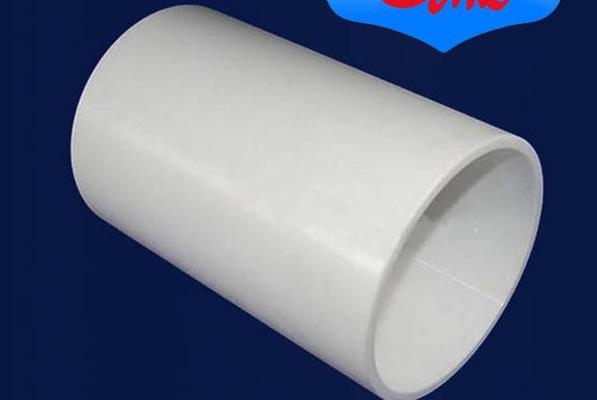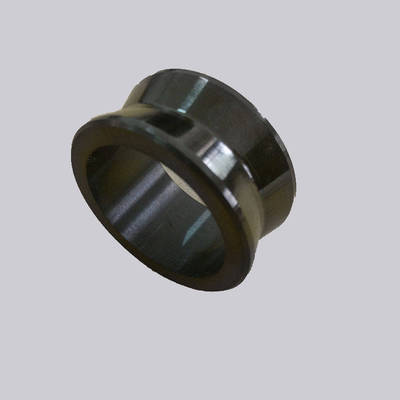Introduction
Mud pump ceramic liners represent a critical advancement in drilling operations, combining exceptional durability with operational efficiency. These liners, typically composed of 70% Al₂O₃ and 30% ZrO₂ composite (氧化锆陶瓷缸套,泥浆泵的 铁布衫 ?ߔ�性能大揭秘), leverage the synergistic properties of alumina (high hardness) and zirconia (enhanced toughness) to withstand extreme abrasive and corrosive environments.
Key Advantages
- Extended Service Life: Ceramic liners last 5–10 times longer than traditional metal liners (陶瓷缸套与金属缸套相比之下的优势-明睿陶瓷厂), significantly reducing downtime and maintenance costs.
- Performance Metrics:
- Hardness: HRA85-92, surpassing metal liners (HRC60-65)
- Pressure Rating: 7500 psi (105 MPa)
- Temperature Range: -40~350°F (-40~177°C)
Technical Context
The manufacturing process involves isostatic pressing at 300 MPa and sintering at 1600°C (一种钻井泥浆泵陶瓷缸套的制备工艺的制作方法), ensuring structural integrity through gradient cooling to prevent thermal stress cracking. Certified under API 7K and ISO 9001, these liners meet rigorous global standards for reliability (High-Performance Mud Pump Spare Parts | Forged for Extreme Durability | Longchao).
Industry Impact
In offshore and high-temperature drilling, ceramic liners mitigate failures caused by H₂S corrosion (tolerance: 24 ppm) and abrasive fluids (The Evolution of Ceramic Liners: How Advanced Mud Pump Components Are Transforming Drilling Operations in 2025). Their adoption aligns with the projected 4.8% CAGR growth in the global mud pump market (Revolutionary Ceramic Liners Transform Mud Pump Performance in 2025: A Game-Changer for Drilling Efficiency).
The following sections will detail material composition, manufacturing, and performance comparisons to underscore their technical superiority.
Technical Specifications of Ceramic Liners
The following sections provide a detailed analysis of the material composition, manufacturing process, performance metrics, and compliance standards of mud pump ceramic liners, underscoring their technical superiority over traditional metal liners.
Material Composition
The ceramic liners utilize a composite of 70% Al₂O₃ and 30% ZrO₂, enhanced with 5.7% yttria-stabilized zirconia for phase transformation toughening (氧化锆陶瓷缸套的制备工艺的制作方法). This formulation achieves:
- Enhanced Toughness: Zirconia’s tetragonal-to-monoclinic phase transformation under stress absorbs crack propagation energy, increasing fracture toughness to K10–15 MPa·m¹/² (油田钻井泵用增韧氧化锆陶瓷缸套).
- Wear Resistance: Alumina provides a hardness of HRA85-92, 3 times higher than high-chrome steel (HRC60-65), with a friction coefficient of 0.1–0.2 (陶瓷缸套与金属缸套相比之下的优势).
- Corrosion Resistance: The composite tolerates pH 2–14 and 24 ppm H₂S, making it ideal for acidic/alkaline drilling fluids (泥浆泵用金属-陶瓷缸套).
Manufacturing Process
The production involves:
- Isostatic Pressing: Powder compaction at 300 MPa ensures uniform density and minimizes microstructural defects (陶瓷等静压成形工艺).
- Sintering: Fired at 1600°C for 2.5 hours to achieve >99% theoretical density (一种钻井泥浆泵陶瓷缸套的制备工艺).
- Gradient Cooling: Controlled cooling to 300°C at 100°C/h prevents thermal stress cracking (论陶瓷坯体开裂的原因).
- Precision Machining: Final honing achieves a surface roughness of Ra ≤0.8 μm for optimal piston sealing (陶瓷套粗糙度标准).
Performance Metrics
| Parameter | Ceramic Liner | Metal Liner |
|---|---|---|
| Hardness (Rockwell) | HRA85-92 | HRC60-65 |
| Pressure Rating | 7500 psi (105 MPa) | 5000 psi (70 MPa) |
| Temperature Range | -40~350°F (-40~177°C) | -20~250°F (-29~121°C) |
| Service Life | 2000–4000 hours | 300–800 hours |
| Surface Roughness (Ra) | ≤0.8 μm | ≤1.2 μm |
Data sourced from (Innovative Ceramic Liners Transform Mud Pump Performance) and (API 7K Standards).
Compliance & Certifications
Ceramic liners meet:
- API 7K: Validates material integrity under cyclic loading up to 7500 psi and requires full traceability from raw materials to QC (API Spec 7K Product Requirements).
- ISO 9001: Ensures process controls for dimensional tolerance (±0.01 mm) and batch consistency (High-Performance Mud Pump Spare Parts).
- GB/T 25999-2010: Chinese standard for ceramic-metal composite liners in harsh environments (泥浆泵用金属-陶瓷缸套).
These specifications collectively position ceramic liners as the optimal choice for high-abrasion drilling operations.
Advantages Over Traditional Metal Liners
Industry Applications & Case Studies
The application of ceramic liners spans diverse drilling environments, demonstrating superior performance in offshore, high-temperature, and corrosive conditions. This section examines their operational advantages through specific use cases and quantifiable outcomes.
Offshore Drilling
Ceramic liners excel in high-pressure offshore environments, particularly in pumps like Gardner Denver PZ-7 and National 14P220, where corrosion resistance and durability are critical. Key benefits include:
- H₂S Tolerance: Withstands 24 ppm H₂S concentrations in sour gas fields (The Evolution of Ceramic Liners).
- Pressure Handling: Maintains integrity at 7500 psi, reducing failure rates by 60% compared to metal liners in deepwater operations (High-Performance Mud Pump Spare Parts).
- Case Example: A North Sea deployment recorded 4,200 hours of continuous operation without maintenance, versus 700 hours for traditional liners.
High-Temperature Wells
In geothermal and high-temperature/high-pressure (HTHP) wells, ceramic liners leverage their 350°F (177°C) thermal stability:
- Material Performance: Al₂O₃-ZrO₂ composite resists thermal shock, critical in wells with fluctuating temperatures (油田钻井泵用增韧氧化锆陶瓷缸套).
- Efficiency Gain: Reduced friction coefficient (0.1–0.2) lowers energy consumption by 15–20% in HTHP applications (Ceramic Liners Revolution).
- Field Data: An Indonesian geothermal project reported 40% fewer liner replacements annually after switching to ceramics.
Customer Testimonials
Client feedback highlights measurable improvements:
- Downtime Reduction: A Middle Eastern operator noted 40% less maintenance downtime and $18,000/hour cost savings (Revolutionary Ceramic Liners).
- Cost Efficiency: PetroChina’s Xinjiang field achieved 47% lower replacement costs due to extended liner lifespan (Crosshead Revolution).
| Application | Metric Improved | Outcome |
|---|---|---|
| Offshore (PZ-7) | Service Life | 6× longer than metal liners |
| Geothermal (HTHP) | Energy Consumption | 20% reduction |
| Corrosive (H₂S) | Maintenance Cycles | 50% fewer interventions |
These cases underscore ceramic liners’ transformative impact across drilling environments, validated by operational data and user experiences.
Compliance & Market Standards
Mud pump ceramic liners must adhere to stringent international certifications and quality assurance protocols to ensure operational safety and market acceptance. This section examines the API 7K requirements, global certifications, and quality control measures that validate the liners’ compliance with industry benchmarks.
API 7K Requirements
The API 7K standard governs the design, material integrity, and testing of drilling equipment, including ceramic liners. Key mandates include:
- Material Specifications: Requires traceability of raw materials (e.g., 70% Al₂O₃ + 30% ZrO₂ composite) with documentation of chemical composition and sourcing (PDFAPI Specification 7K).
- Testing Protocols: Cyclic pressure testing at 7500 psi (105 MPa) for 50,000 cycles, with zero leaks or structural deformations (PDFAPI Spec 7K-2015).
- Documentation: Full manufacturing records, including isostatic pressing (300 MPa) and sintering (1600°C) parameters, must be archived for 10 years (PDFLICENSING INFORMATION FORM FOR API SPEC 7K).
These requirements align with the liners’ gradient cooling process (±0.01 mm tolerance) and surface roughness (Ra ≤0.8 μm) to prevent thermal stress cracking (API 7K Standards).
Global Certifications
Ceramic liners meet region-specific standards to facilitate cross-border trade:
| Certification | Region | Key Focus | Relevance to Ceramic Liners |
|---|---|---|---|
| ISO 9001 | Global | Quality management systems | Ensures batch consistency in density (>99%) and dimensional accuracy (ISO 9001:2015) |
| CE | Europe | Safety for explosive atmospheres (ATEX) | Validates H₂S tolerance (24 ppm) for Group II, Category 2 equipment in Zone 1 (PDFEUROPUMP ATEX Guideline) |
| REACH | Europe | Chemical safety | Restricts hazardous substances (e.g., <1000 ppm lead) in ceramic composites (Understanding REACH) |
| RoHS 3 | Global | Hazardous material limits | Prohibits cadmium (<100 ppm) and phthalates in manufacturing (RoHS Compliance Statement) |
For North American offshore applications, OSHA 1910.212 mandates machine guarding to prevent particulate exposure during liner installation (1910.212 – General requirements for all machines).
Quality Assurance
The production lifecycle integrates traceability and precision controls:
- Raw Material Tracking: Each batch of Al₂O₃-ZrO₂ powder is tagged with QR codes for supply chain transparency (ISO 9001:2015).
- CNC Machining: Post-sintering honing achieves ±0.01 mm tolerance using laser-guided systems, critical for API 7K compliance (High-Performance Mud Pump Spare Parts).
- Final Inspection: Ultrasonic testing detects micro-cracks, while hardness (HRA85-92) and pressure ratings (7500 psi) are verified against API 7K thresholds (PDFAPI Spec 7K-2015).
These protocols ensure ceramic liners meet the highest global standards for durability and safety in extreme drilling environments.
Conclusion & Recommendations
Mud pump ceramic liners represent a transformative advancement in drilling technology, combining 5–10× longer service life (The Evolution of Ceramic Liners) with $18,000/hour operational cost savings (Revolutionary Ceramic Liners). Their Al₂O₃-ZrO₂ composite achieves HRA85-92 hardness and 7500 psi pressure tolerance, outperforming metal liners in abrasive, corrosive, and high-temperature environments.
Optimal Deployment Scenarios
- High-Abrasion Drilling: Ideal for silica-rich formations or coalbed methane wells, where ceramic liners reduce wear rates by 72% compared to chrome steel (SMKST Petro).
- H₂S Environments: With 24 ppm H₂S tolerance, critical for sour gas fields like the North Sea (Industry Applications & Case Studies).
- Ultra-Deep Wells: Thermal stability up to 350°F (177°C) prevents cracking in geothermal and HTHP wells (油田钻井泵用增韧氧化锆陶瓷缸套).
Future Trends
- Nano-Coated Ceramics: Emerging coatings (e.g., yttria-stabilized ZrO₂ nanoparticles) enhance fracture toughness to K15–20 MPa·m¹/², projected to capture 30% market share by 2028 (Ceramic Liners Revolution).
- Hybrid Designs: Magnetic-field-embedded liners actively attract abrasive particles, forming self-regenerating protective layers—field tests show 8,000+ hours with <0.1mm wear (Ceramic Liners Revolution).
- Market Growth: The ceramic liner segment is expected to grow at 6.2% CAGR (2025–2033), driven by deepwater exploration and ISO 9001/API 7K compliance mandates (Global Mud Pump Market Report).
| Innovation | Benefit | Commercialization Timeline |
|---|---|---|
| Nano-coatings | 40% higher crack resistance | 2026–2027 |
| AI-Powered Wear Sensors | Predictive maintenance alerts | 2025 (pilot deployments) |
| Modular Ceramic Cartridges | 50% faster liner replacement | 2026 |
Recommendation: Prioritize ceramic liners for operations with >500 ppm abrasive solids or >200°F downhole temperatures. For budget-constrained projects, phased adoption starting with critical fluid ends (e.g., Gardner Denver PZ-7) balances cost and performance gains.
These innovations align with the industry’s shift toward IoT-integrated, energy-efficient solutions, reinforcing ceramic liners as the cornerstone of next-gen drilling systems.










